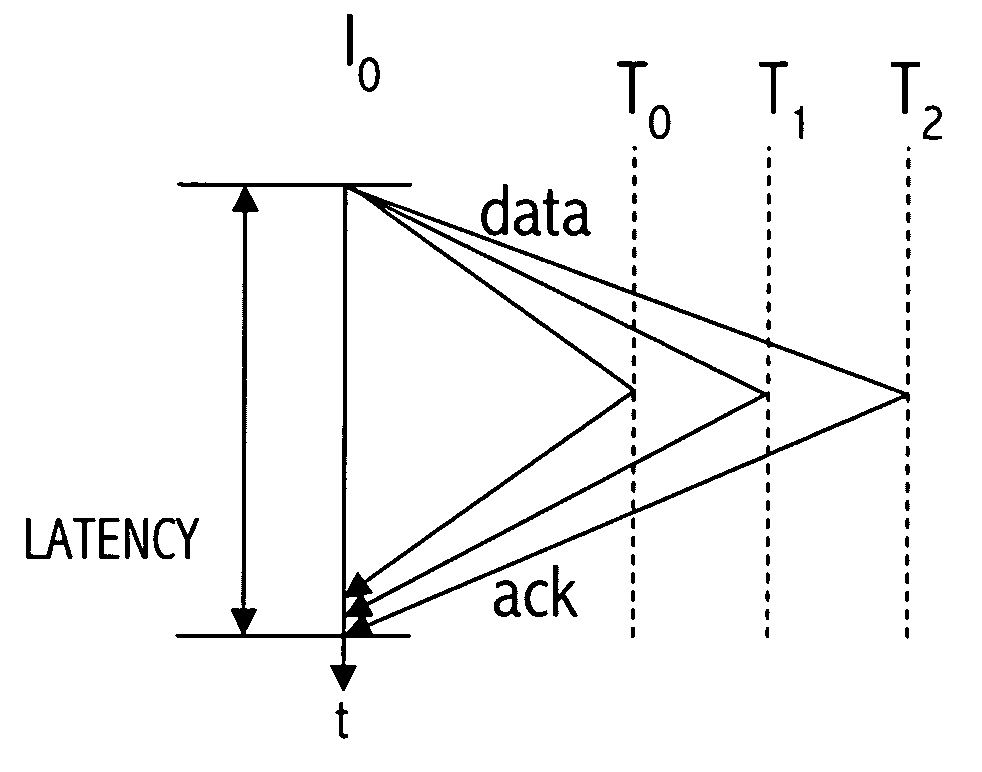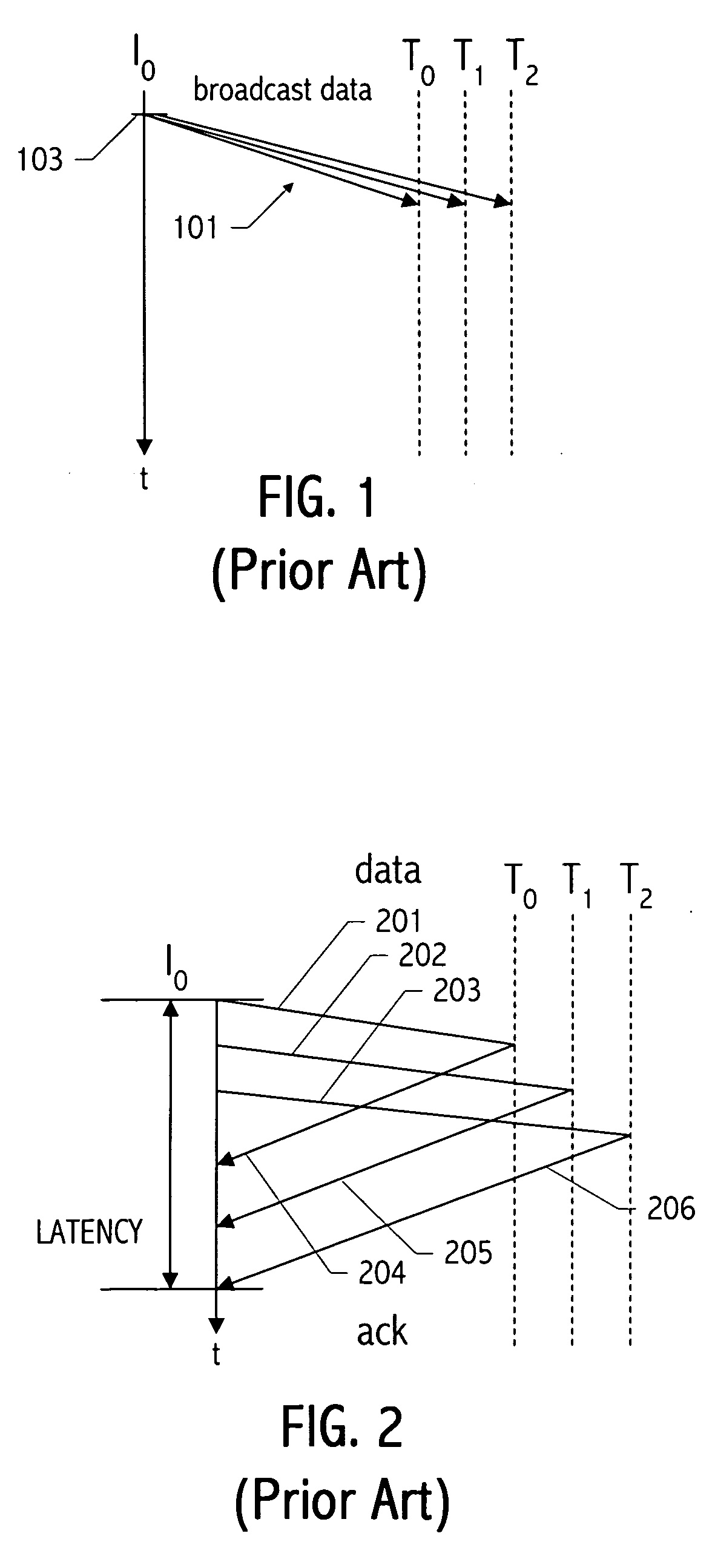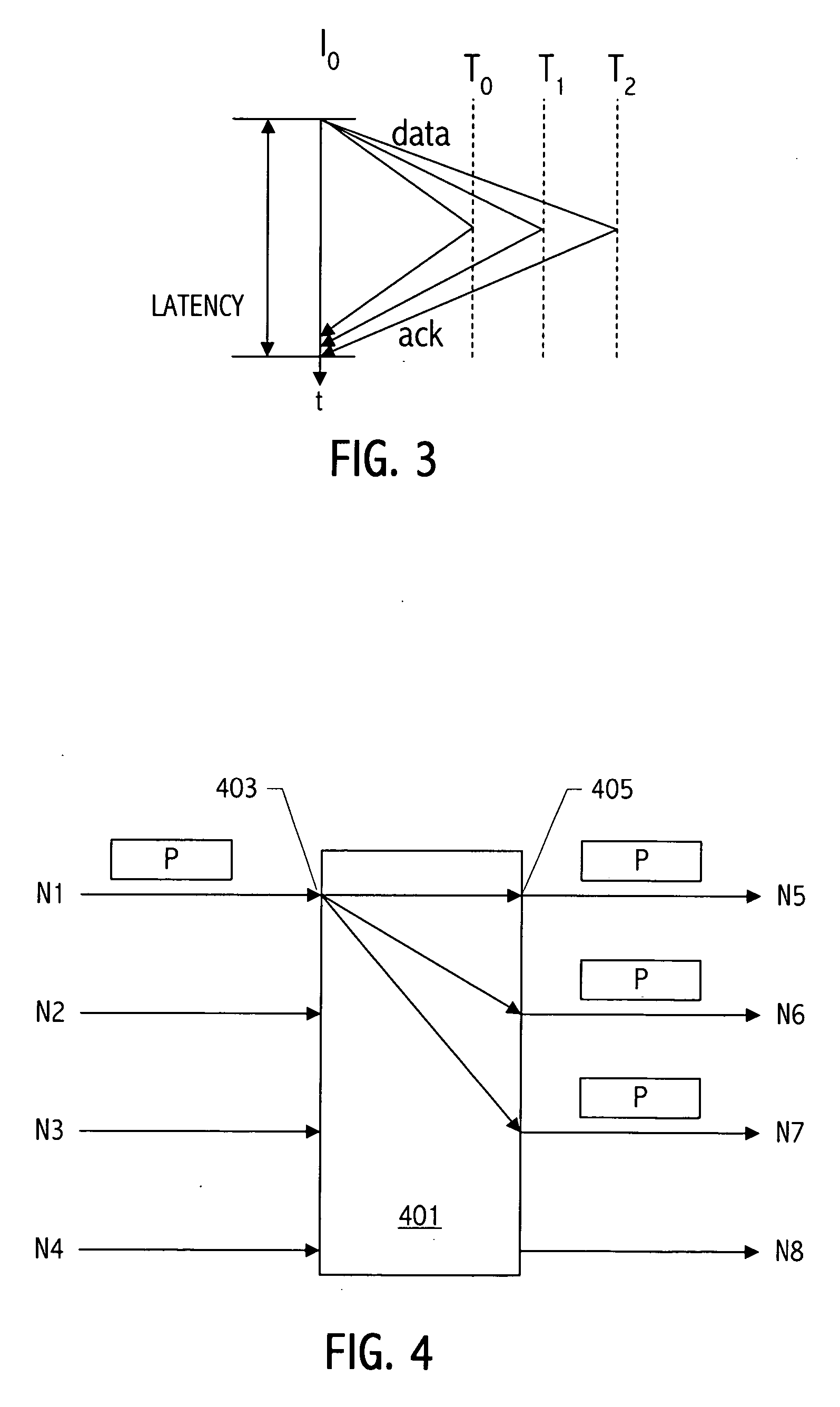Reliable multicast using merged acknowledgements
a multicast and acknowledgement technology, applied in the field of information communication, can solve problems such as unreliable operation, inability to multicast, and inability to meet the needs of initiators, and achieve the effect of reducing multicast traffi
- Summary
- Abstract
- Description
- Claims
- Application Information
AI Technical Summary
Benefits of technology
Problems solved by technology
Method used
Image
Examples
Embodiment Construction
)
[0022] Although the following description refers to acknowledgements in many of the examples, the same can be applied to negative acknowledgements.
[0023] Referring to FIG. 3, operation of a reliable multicast operation is illustrated. Assume the system includes multiple nodes including the illustrated initiator node I0 and three target nodes T0, T1 and T2. The initiator node I0 sends information (data) to the three targets T0, T1 and T2 simultaneously, i.e., the initiator node I0 multicasts the information to the three targets. Each target, assuming successful receipt, sends back an acknowledgement (ack) to the initiator node I0. As described further herein, in order for the initiator node I0 to receive the simultaneously sent acknowledgements, the acknowledgements are merged and then provided to the initiator node. The merger operation is described further herein.
[0024] Referring to FIG. 4, the first part of a reliable multicast operation according to an embodiment of the invent...
PUM
 Login to View More
Login to View More Abstract
Description
Claims
Application Information
 Login to View More
Login to View More - R&D
- Intellectual Property
- Life Sciences
- Materials
- Tech Scout
- Unparalleled Data Quality
- Higher Quality Content
- 60% Fewer Hallucinations
Browse by: Latest US Patents, China's latest patents, Technical Efficacy Thesaurus, Application Domain, Technology Topic, Popular Technical Reports.
© 2025 PatSnap. All rights reserved.Legal|Privacy policy|Modern Slavery Act Transparency Statement|Sitemap|About US| Contact US: help@patsnap.com



